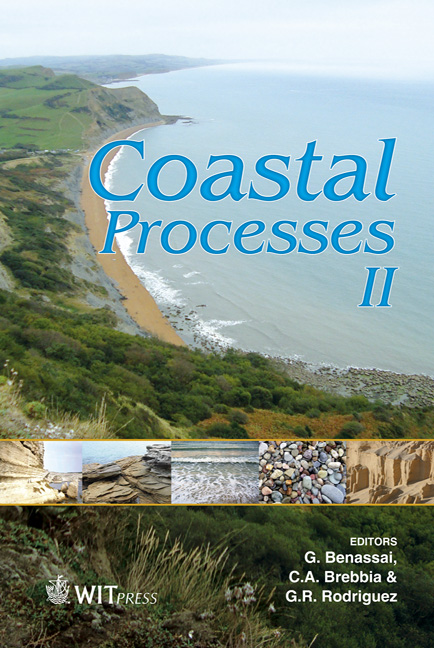Wave Climate And Coastal Processes In The Osmussaar–Neugrund Region, Baltic Sea
Price
Free (open access)
Transaction
Volume
149
Pages
12
Page Range
99 - 110
Published
2011
Size
2,060 kb
Paper DOI
10.2495/CP110091
Copyright
WIT Press
Author(s)
Ü. Suursaar, R. Szava-Kovats & H. Tõnisson
Abstract
The aim of the paper is to investigate hydrodynamic conditions in the Neugrund Bank area from ADCP measurements in 2009–2010, to present a local long-term wave hindcast and to study coastal formations around the Neugrund. Coastal geomorphic surveys have been carried out since 2004 and analysis has been performed of aerial photographs and old charts dating back to 1900. Both the in situ measurements of waves and currents, as well as the semi-empirical wave hindcast are focused on the area known as the Neugrund submarine impact structure, a 535 million-years-old meteorite crater. This crater is located in the Gulf of Finland, about 10 km from the shore of Estonia. The depth above the central plateau of the structure is 1–15 m, whereas the adjacent sea depth is 20– 40 m shoreward and about 60 m to the north. Limestone scarp and accumulative pebble-shingle shores dominate Osmussaar Island and Pakri Peninsula and are separated by the sandy beaches of Nõva and Keibu Bays. The Osmussaar scarp is slowly retreating on the north-western and northern side of the island, whereas the coastline is migrating seaward in the south as owing to formation of accumulative spits. The most rapid changes have occurred either during exceptionally strong single storms or in periods of increased cyclonic and wave activity, the last high phase of which occurred in 1980s–1990s. Keywords: wave hindcast, coastal dynamics, impact crater, climate change.
Keywords
wave hindcast, coastal dynamics, impact crater, climate change





